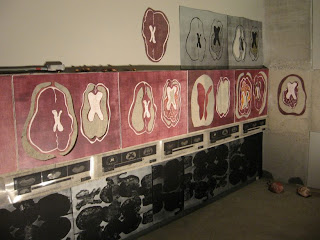This is video and performance installation
about the effects of memory loss leading to dementia. Inspired by my mother’s battle with dementia and my own fear
of losing my memory this is a project that investigates the creative
deterioration and dissociation experienced when one’s daily life starts to
break down. As my mother’s actual
world became more foreign, she increasingly identified with the television set
as the basis for her reality. With
sound and visuals I explore and combine the every day worlds of both my
mother’s, and myself mashing chronological time into other order. Despite the
confusion and disintegration another resonance is apparent. Like the river I grew up on there is a consistency
that stills the disconnectedness.
One November winter day, in 2010, I came home exhausted and saw the chaos of dishes in my kitchen sink as reflective of my state of mind. I was curious to see what correlations I could find with my mother's, through the disintegration of her everyday life caused by the onslaught of dementia. Her only solace appeared to be with the river that ran behind our house. Every day for a year I took photos of my kitchen sink, which I then overlayed with all of the different bodies of water (the river I grew up on, as well as other rivers and the ocean) that I have lived on, or near to, from the west coast to the east.


































